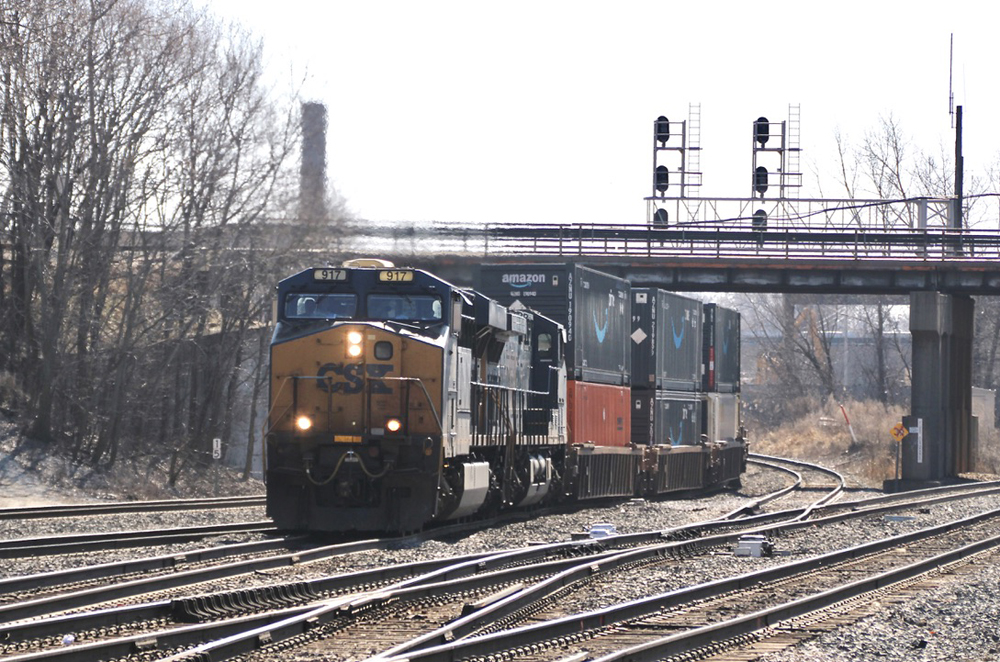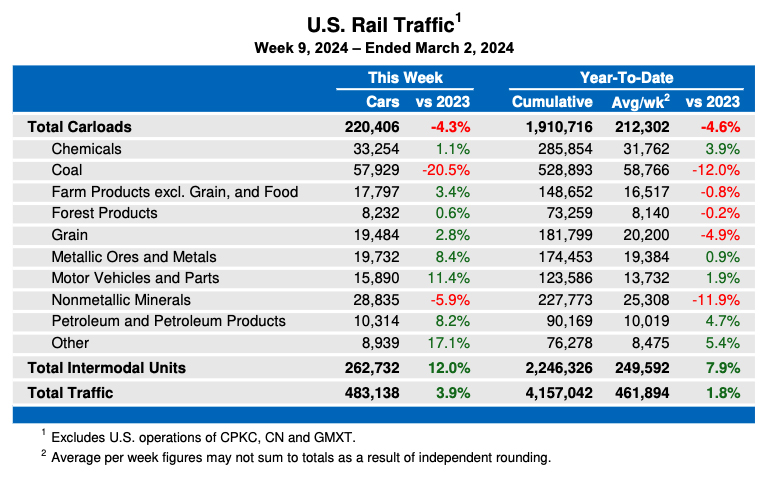
WASHINGTON — U.S. rail traffic was up 4.9% in February compared to the same month a year ago, according to statistics from the Association of American Railroads, while volume for the week ending March 2 was also up, the sixth straight week of gains compared to 2023.
The February gains came after January’s traffic levels shows a 0.7% decrease. The overall gain included a 1.3% decrease in carload traffic and a 10.9% increase in intermodal volume.
“In February, U.S. rail traffic recovered from disruptions caused by severe winter weather in January. However, a closer look at February’s rail traffic data shows elements that inspire optimism and elements that call for caution,” said Dr. Rand Ghayad, the AAR’s newly appointed chief economist. “Intermodal volumes have consistently grown over the past six months, signaling increased confidence among consumers and retailers. At the same time, carloads of industrial products remain below levels from last spring and summer, reflecting ongoing challenges in the industrial sector.
“Looking ahead, we hope to see improvements in manufacturing output and consumer spending, which are key drivers of rail transportation. This comes as the goods-producing sector begins to rebound from the stagnation experienced in the sector following the post-COVID-19 period.”
Year-to-date traffic shows carload volume down 4.6% compared to the same period in 2023, while intermodal traffic is up 7.9%, for an overall increase of 1.8%.
Week ending March 2

The weekly traffic figure was 483,138 carloads and intermodal units, up 3.9% from the corresponding week in 2023. That included 220,406 carloads, down 4.3%, and 262,732 containers and trailers, up 12%.
North American volume, from 10 reporting U.S., Canadian, and Mexican railroads, includes 324,643 carloads, down 4.6% compared with the same week in 2023, and 344,823 intermodal units, up 10.9%. The combined total of 669,466 carloads and intermodal units represents a 2.8% increase. Total North American volume through nine weeks of 2024 is up 0.9% compared to a year ago.













